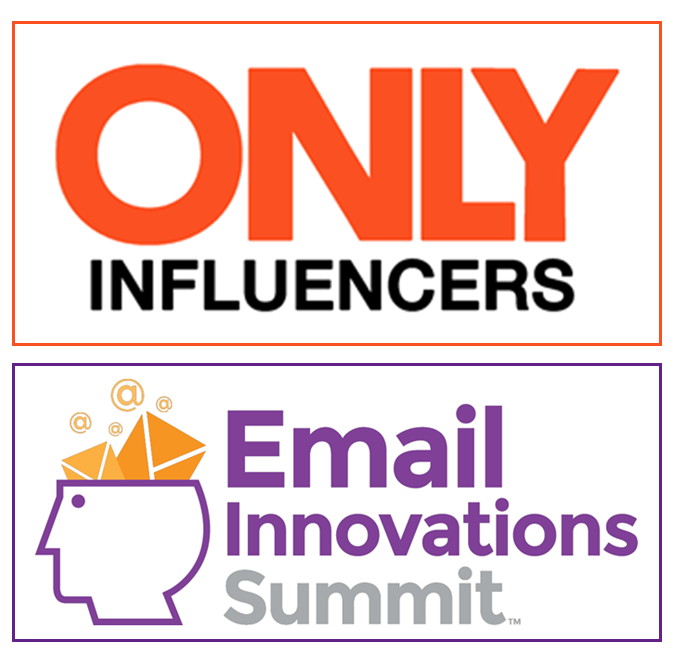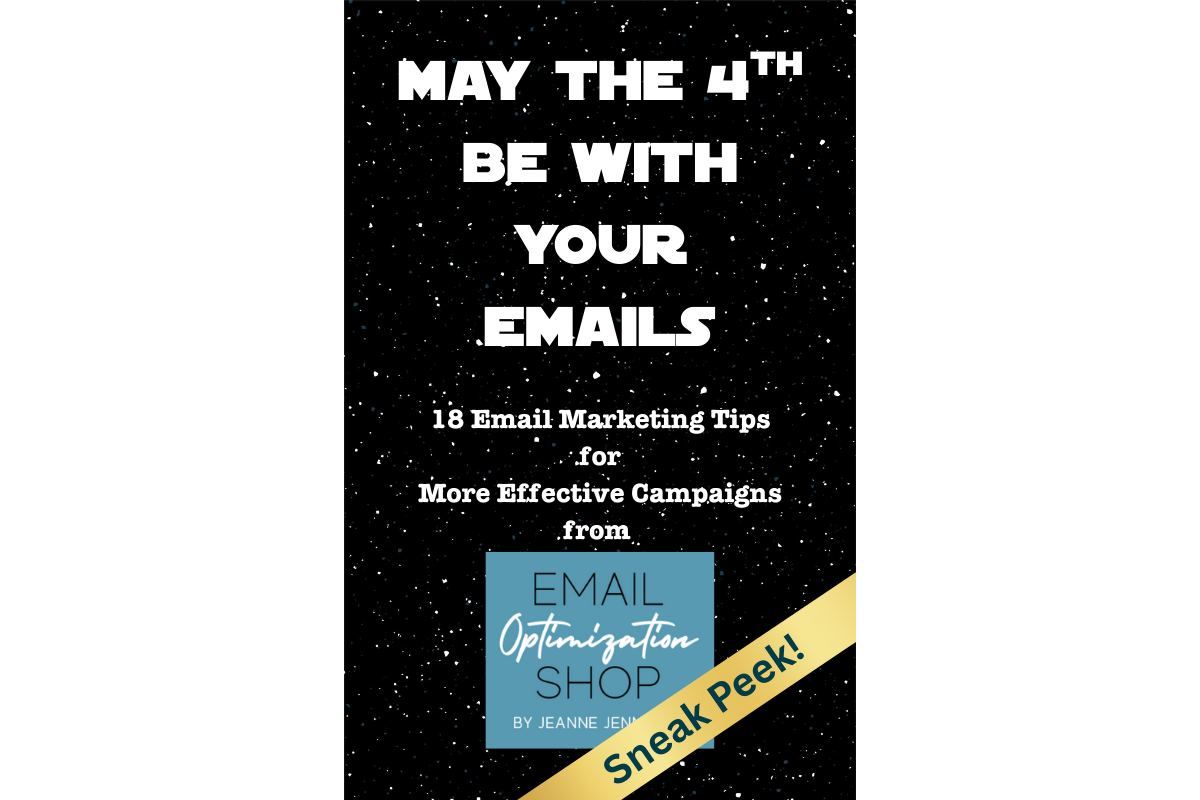I was thrilled on a recent Only-Influencers-Members-Only discussion (you should join! Reach out to me to learn more) when another member said that she had tried my ‘strategic resend’ tactic. It worked so well, she said, that it’s now standard operating procedure for her email program.
I’ve written about it before in general terms, but I thought a client case study might help further illustrate the value. So here goes!
When I say strategic resend, I have something very specific in mind. Here are the parameters:
- You start with a successful email send
- Then you resend the same email (no change*)
- Only to those who clicked but did not convert
- Within 10 days of the original send
*One caveat: If you’ve done an A/B split test where the creatives were very similar, you’ll use the winner of that test for the resend. This will make more sense later in the post.
Yes, you read that right. We are only resending to people who clicked on the original email send but did not convert. In this case study, the conversion was a purchase.
Why not resend to the entire list?
You could; but this often results in elevated unsubscribes and spam complaints. Think about it. People who weren’t interested the first time they received it likely aren’t interested the second time they receive it.
Resending just to those who clicked has a number of benefits:
- Very few or no unsubscribes or spam complaints, since they liked the email enough to click the first time
- Highly relevant content, which is based, again, on the fact that it motivated them to click the first time they received it
- The open, click, and conversion metrics on these sends tend to be much, much higher than on the original send
- Resending to those who clicked frees up the rest of the list to receive a different offer which may be of interest to them
In short, it’s a simple way to squeeze a bit more conversions, revenue, or whatever your KPI is, with very little incremental cost or resources.
The email in this case study was part of a holiday campaign; it was offering $10-and-under gifts to corporate buyers, who would be purchasing in bulk for clients or employees.
Here are the results of that initial send:

This send included an A/B split test to see which version of the email would generate more revenue. As you can see, the test won. Want to learn more? Check out my blog post on this test.
Now back to the strategic resend.
We pulled two lists related to this send:
- The list of those who clicked on this email
- The list of those who made a purchase after clicking on this email
The we suppressed those who had purchased from the list of those who clicked. This is the list we used for our strategic resend.
One more caveat: even if you can’t suppress purchasers, it’s still worthwhile to do a strategic resend; those purchasers are unlikely to unsubscribe or complain, and sometimes they may purchase again!
Next step: creative.
Yes, strategic resends are to use the same creative as the original send, no changes. But…
In this case, the difference between the control and test versions was minimal – just the number of products that were included. See the wireframe below.
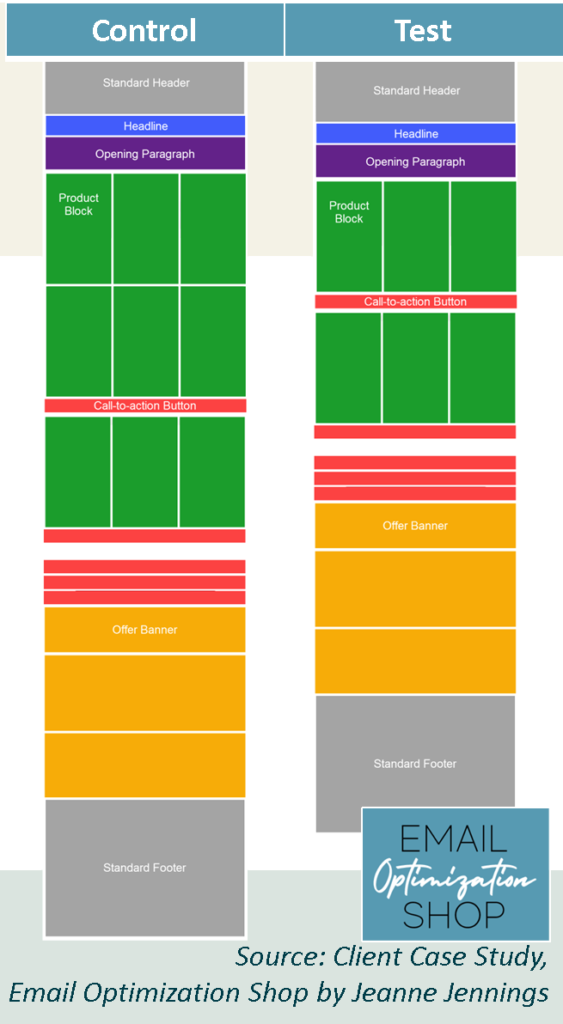
Since they are so similar, and since the test generated 21% more revenue-per-email than the control (refer to the results table earlier in this post), we use the test version of the email for the resend.
And the results were spectacular, even for a strategic resend.
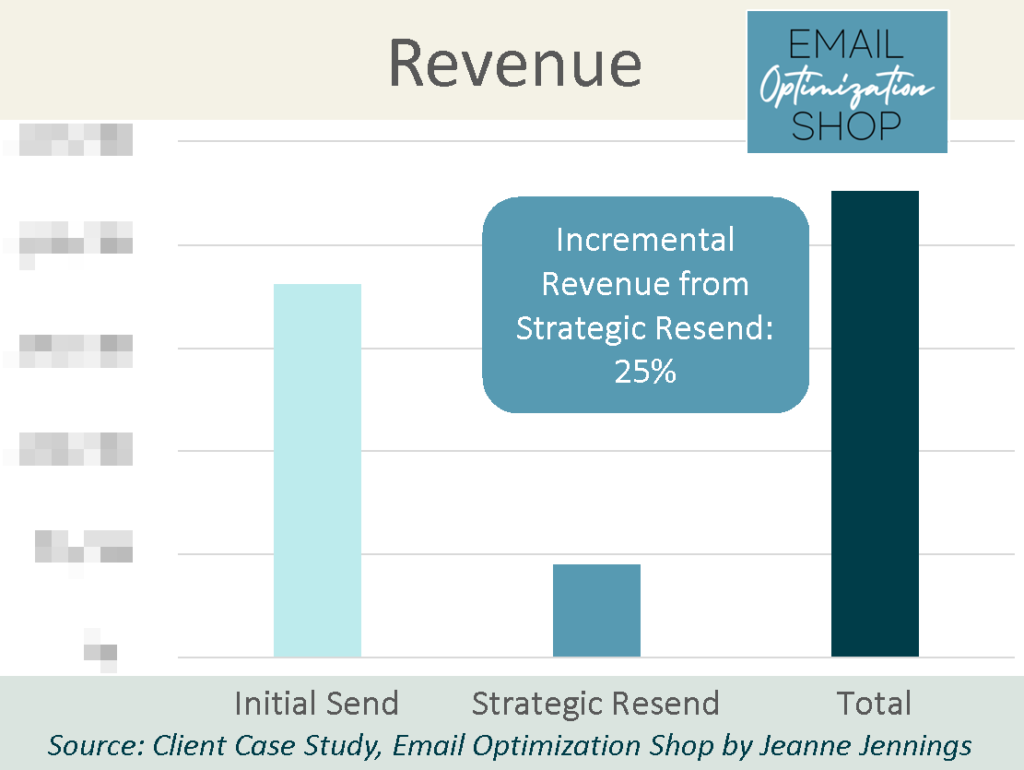
We got a 25% incremental increase in revenue from the resend – that’s money that would have been left on the table without the second send.
Here are the full results:

The resend was a much smaller send quantity, since we only went to those who had clicked but not converted. But the performance bested the original send dramatically.
Most importantly, revenue-per-email (RPE) went from less than a nickel ($0.041) to more than $2.00 ($2.032 to be exact). That’s a 4845% increase in RPE for the strategic resend – and that’s evidence of the high relevance.
The average order value was 59% higher for the resend ($497.97) than for the original send ($312.60). And the conversion rate jumped from 0.013% to 0.408%, a 3005% lift.
Admittedly, some of the lift for the resend was the result of using the winner of the A/B split test from the original send.
But even when we isolate the results for the original send to just include the winning test version, we still see significant lifts in key metrics for the strategic resend.

The magnitude decreases a little, but you can still see that the strategic resend performed dramatically better than the original send.
Think this is a one-time thing? Think again.
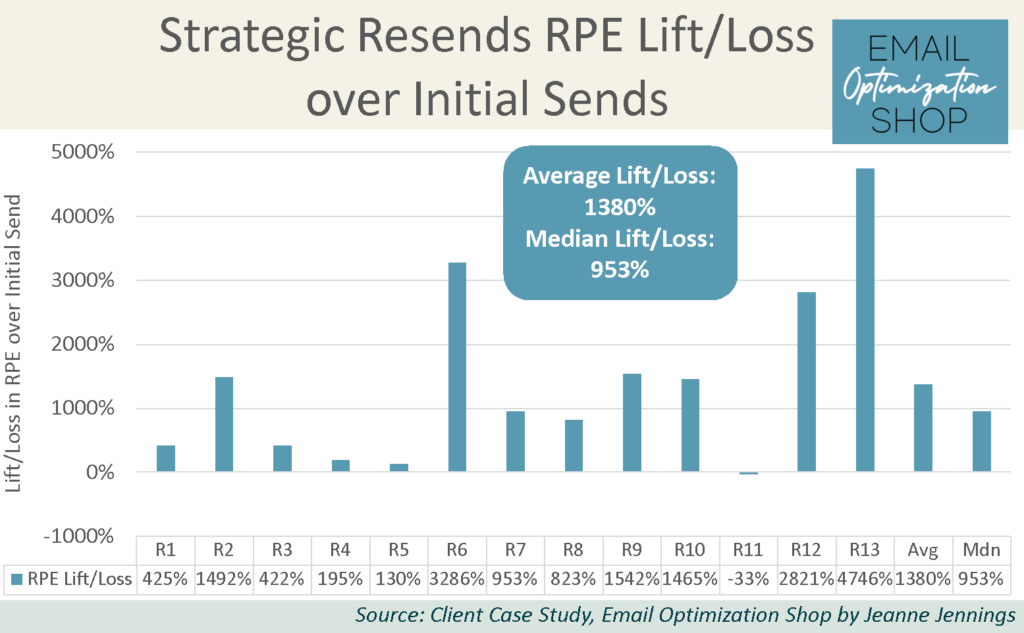
The chart above shows the performance of every resend we did over the course of a single campaign. The average RPE lift/loss was 1380%; the median lift/loss was 953%. Only one strategic resend garnered an RPE lower than the original send – and the loss was just 33%.
If you’re not doing strategic resends for your best performing emails, now’s the time. Give it a try and let me know how it goes.
Feeling overwhelmed? Let’s talk about how I can help you improve the bottom-line performance of your email with strategies and tactics like this one.

Photo by Andrew Seaman on Unsplash
